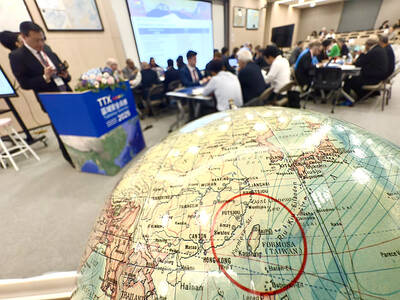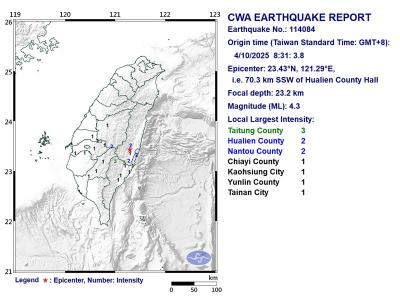An imminent decision by the South Korean Air Force on the type of advanced radar system it will adopt for the upgrade of its 135 KF-16C/Ds will likely have a ripple effect in Taiwan as the latter mulls options for the upgrade of its 145 F-16A/Bs.
Up until recently, only one US defense firm, Raytheon Corp, had been cleared by the US government to export Active Electronically Scanned Array (AESA) radars, one of the main components in the US$5.8 billion arms package for Taiwan notified to US Congress in September last year.
However, the US Department of State last month gave Northrop Grumman Corp a permanent export license (DSP-5) for its own version of the AESA radar — known as the Scalable Agile Beam Radar (SABR) — for the South Korean and Taiwanese bids.
Raytheon had obtained a DSP-5 for its Raytheon Advanced Combat Radar (RACR) in 2008, US-based Defense News reported earlier this month.
The DSP-5 license is the first step in the foreign military sales process and allows for the release of unclassified technical information and data to a foreign country.
With this decision, Taipei will now be able to choose between the two manufacturers as it negotiates the acquisition of the 176 AESA radars included in the notification.
Although the air force was informed by the Executive Yuan that it would only be given US$3.7 billion for the F-16 upgrade — US$1.5 billion less than the US$5.2 billion proposed in the notification — the Ministry of National Defense remains committed to obtain the advanced radar, a multifunction sensor that, among other things, allows for the targeting of multiple objects simultaneously.
Taipei has also not abandoned its plans to procure 66 of the more advanced F-16C/D, efforts that have been unsuccessful since 2007.
Reporting from the Singapore Air Show earlier this month, UK-based Jane’s Defence Weekly said that the US Air Force, which announced a program on Feb. 10 to upgrade 350 F-16C/Ds by 2020, would likely pick the radar adopted by the South Korean Air Force. By doing so, the US Air Force would lower the price tag for its retrofits, as South Korea would be the one paying for the integration costs.
Taiwan is also likely to adopt whichever AESA system is picked by South Korea, the defense magazine said.

Taiwan is stepping up plans to create self-sufficient supply chains for combat drones and increase foreign orders from the US to counter China’s numerical superiority, a defense official said on Saturday. Commenting on condition of anonymity, the official said the nation’s armed forces are in agreement with US Admiral Samuel Paparo’s assessment that Taiwan’s military must be prepared to turn the nation’s waters into a “hellscape” for the Chinese People’s Liberation Army (PLA). Paparo, the commander of the US Indo-Pacific Command, reiterated the concept during a Congressional hearing in Washington on Wednesday. He first coined the term in a security conference last

DEFENSE: The National Security Bureau promised to expand communication and intelligence cooperation with global partners and enhance its strategic analytical skills China has not only increased military exercises and “gray zone” tactics against Taiwan this year, but also continues to recruit military personnel for espionage, the National Security Bureau (NSB) said yesterday in a report to the Legislative Yuan. The bureau submitted the report ahead of NSB Director-General Tsai Ming-yen’s (蔡明彥) appearance before the Foreign and National Defense Committee today. Last year, the Chinese People’s Liberation Army (PLA) conducted “Joint Sword-2024A and B” military exercises targeting Taiwan and carried out 40 combat readiness patrols, the bureau said. In addition, Chinese military aircraft entered Taiwan’s airspace 3,070 times last year, up about

A magnitude 4.3 earthquake struck eastern Taiwan's Hualien County at 8:31am today, according to the Central Weather Administration (CWA). The epicenter of the temblor was located in Hualien County, about 70.3 kilometers south southwest of Hualien County Hall, at a depth of 23.2km, according to the administration. There were no immediate reports of damage resulting from the quake. The earthquake's intensity, which gauges the actual effect of a temblor, was highest in Taitung County, where it measured 3 on Taiwan's 7-tier intensity scale. The quake also measured an intensity of 2 in Hualien and Nantou counties, the CWA said.

The Overseas Community Affairs Council (OCAC) yesterday announced a fundraising campaign to support survivors of the magnitude 7.7 earthquake that struck Myanmar on March 28, with two prayer events scheduled in Taipei and Taichung later this week. “While initial rescue operations have concluded [in Myanmar], many survivors are now facing increasingly difficult living conditions,” OCAC Minister Hsu Chia-ching (徐佳青) told a news conference in Taipei. The fundraising campaign, which runs through May 31, is focused on supporting the reconstruction of damaged overseas compatriot schools, assisting students from Myanmar in Taiwan, and providing essential items, such as drinking water, food and medical supplies,